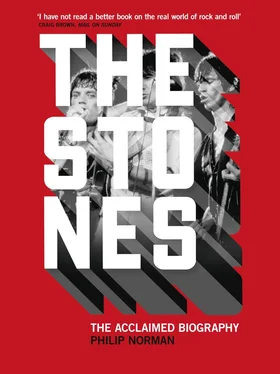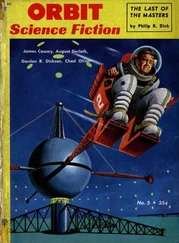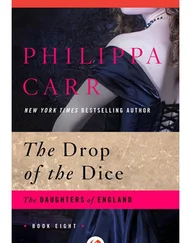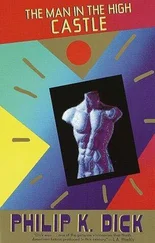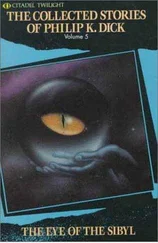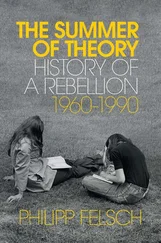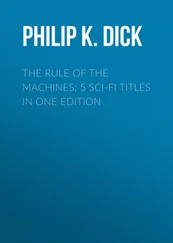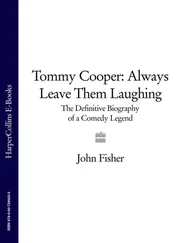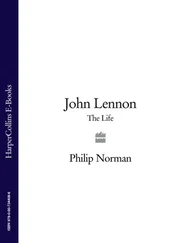In the early Sixties, Giorgio combined the role of assistant film editor and West End Jazz Club manager, running the old Mississippi Room, with earnest attendance at classes to study Stanislavsky’s Method acting. Among his fellow students in the class was a young Irishman named Ronan O’Rahilly, whose family was rumoured to own the greater part of County Cork, and who was also trying to crash into the London entertainment scene by managing Alexis Korner’s Blues Incorporated.
Gomelsky’s first blues club was the Piccadilly, set up on a Russian shoestring in the old Cy Laurie folk cellar. The Rolling Stones played there just once, shortly before Harold Pendleton and Cyril Davies squeezed them out of the Marquee. Much as Gomelsky liked them as individuals, he thought their playing ‘abominable’. Counting Mick Jagger’s younger brother, Chris, only twenty or so people turned up that night to see them.
In early 1963, the Piccadilly Club had closed and Giorgio needed a new venue that could be hired with the single five-pound note he had in his pocket. He knew the landlord of the Station Hotel in Kew Road, Richmond, and knew that the pub’s substantial back room had not been in use since its regular trad jazz sessions had petered out. ‘I said, “Let me try blues here, just for one night …”’ The club was called the Crawdaddy, after a Bo Diddley song, Do the Crawdaddy. Sessions took place on Sunday nights within the Station Hotel’s licensing hours, 7 to 10:30 p.m. Its first resident attraction was the Dave Hunt Group, featuring Ray Davies – who would one day lead the Kinks – and playing in Louis Jordan’s 1940s ‘jump band’ style.
Brian Jones had long been pestering Giorgio to do something to help the Rolling Stones. ‘He had that little speech impediment – kind of a lisp. It used to be part of his charm. “Come and lithen to us, Giorgio,” he’d plead with me. “Oh, Giorgio, pleathe get us some gigs.”’
Since their first disastrous tryout at the Piccadilly Club, Giorgio had seen the Stones again – at the Red Lion in Sutton – and had noticed a vast improvement. ‘But what could I do? Dave Hunt’s group already had the Richmond gig.
‘It was the weather, really, that got them their chance. Dave Hunt’s band couldn’t make it, because of the snow – and anyway, I didn’t go so much for that jump-band stuff Dave was playing. So, Monday, I rang Ian Stewart – it was so funny: to get the Stones you had to go through to ICI. I said, “Tell everyone in the band you guys are on next Sunday.”’
That first Sunday night when the Rolling Stones played the Crawdaddy instead of Dave Hunt’s group, attendance was disastrously reduced. ‘I even went through to the main pub to try to round some more customers up,’ Giorgio says. ‘Anyone who’d buy a ticket was allowed to bring in another person for nothing.’
Giorgio himself stood in the half-empty room, watching a group that, in the few weeks since their Red Lion date, had changed almost beyond recognition. The principal change was Brian Jones with his new, heaped, yellow Beatle cut, coaxing and caressing the blues harp in his cupped hands to produce sounds like silvery minnows darting in and deftly out of Keith’s guitar riffs. Another change was the boy in the dapper three-piece suit, seated behind his drums with all the pleasure of a convict trying out an electric chair, yet playing with an impeccable, light-handed touch that pulled every loose thread together and closed up every crack. Everything had come right behind the lead singer who was so far from right, but compulsively wrong, in the sweater that slipped off one shoulder like a teagown, his smear of a mouth parroting a black man’s words as his opaque eyes searched for his reflection in the mirrors all round him. That snowy Sunday night, behind a Thames-side pub, where bottles clashed into basketwork skips and feathered darts thudded against targets, the Stones began to be brilliant.
Within three weeks, they had attracted a huge following, of whom r & b enthusiasts were only a minor part. Richmond, Twickenham and Surbiton on a Sunday night offered little enough excitement of any kind. The larger and larger crowds that converged on the Station Hotel and flooded down its side passageway contained samples of every teenage faction that had ever done battle on Brighton or Margate beach. There were Mods in high-button suits, newly dismounted from Lambretta scooters. There were black-leather Rockers, in studs and cowboy boots. Unified by the bond of the polo-neck, there were art students and shop assistants and well-brought-up boys and girls from middle-class riverside homes at Putney, Hammersmith and Strand-on-the-Green. ‘And do you know – there was never one fight in that place,’ Gomelsky says. ‘All that glass on the walls, and not even a mirror broken.’
At first, the Crawdaddy crowd behaved like jazz fans, merely standing and watching the Stones in the red-spotlit dusk. Then one night, Giorgio’s young assistant, Hamish Grimes, jumped up on a table top and began to leap and flail his arms with the music like a dervish. From Hamish’s impromptu outburst there evolved a dance peculiar to the Crawdaddy Club, partly derived from the Twist and the Hully-Gully but unique in that it could be performed by single males or even pairs of males, locked in a strange, crablike embrace, each gripping the other’s elastic-sided ankles. The climax of each Stones session was a Bo Diddley song, either Do the Crawdaddy or Pretty Thing, when, at Giorgio’s encouragement, the whole 300 would form a solid mass of corduroy, op-art strips and red-spotlit shirt collars, jumping and gyrating together for as long as twenty minutes at a time.
Giorgio Gomelsky became the Rolling Stones’ first manager, mainly through his own reluctance to be considered anything so bourgeois. ‘It was always a partnership . I used to divide the door receipts from each Sunday equally with them. They would help me keep the club going. For instance, we never paid to advertise the Crawdaddy Club. The Stones and I would put illegal fly posters all over. I got them printed for four pounds a thousand, and the Stones mixed up the paste in the bath at Edith Grove.’
From the moment they began pulling in the crowds at Richmond, Giorgio had been urging his contacts in the London music press to come to Richmond and see the Stones perform. He also began shooting 35mm film of them onstage at the Crawdaddy and arranged for them to make a soundtrack of two Bo Diddley songs at a small studio in Morden. It was typical of the idealistic Russian that, while working to launch the Stones, he never attempted to put them under exclusive contract to himself. His advice, on the contrary, was to let no one have control over them but themselves. ‘I kept telling them, “Wait. Get strong, so that you can handle all of it yourselves and don’t have to ask anyone for anything. Don’t run the risk of someone walking in here and taking you over.”’
Giorgio, in fairness, had a somewhat larger project on his mind. Two years previously, while living in West Germany, he had visited Hamburg’s sleazy St Pauli district and had seen the Beatles in their earliest incarnation as black-leather rockers, pouring out bowdlerized r & b and their own primitive compositions to an audience of whores, transvestites and merchant seamen. Watching them now, in their crew-necked suits, bobbing and frolicking on the torrents of ever wilder hysteria, Giorgio Gomelsky realized they were something more than merely the biggest pop attraction since Cliff Richard and the Shadows.
The tiny world of London impresarios soon brought Giorgio Gomelsky into contact with the Beatles’ twenty-seven-year-old manager, Brian Epstein. ‘I would be there when dance hall promoters rang up Epstein, offering him £50 for one appearance by the Beatles. He’d say, “I don’t know …” and start looking in his diary. So then the promoter would offer him £60. “I don’t know …” he’d still say. The promoter would offer £70, thinking Epstein was stalling for more money. He wasn’t. He just couldn’t find the right date in his diary.’
Читать дальше
